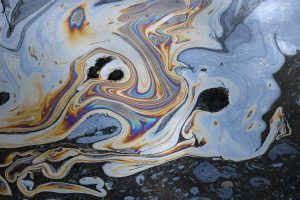
Recyclable bioplastic membrane could clear oil spills from water
Canadian Plastics
Materials Research & DevelopmentPolymer scientists in the Netherlands have developed a superamphiphilic vitrimer epoxy resin membrane that can be used to separate water and oil.

Photo Credit: sirylok/Adobe Stock
Cleaning up oil spills in water is one of the most challenging tasks in the global fight against pollution, and involves the difficult job of separating the oil from the water. Recent developments have involved using superamphiphilic membranes, which can be used as water-removal substances for oil/water mixtures. The problem is, these membranes are often not robust enough for use outside the laboratory environment and the membrane pores can clog up as a result of fouling by algae and sand.
Which is why a new potential breakthrough from polymer scientists from the University of Groningen and NHL Stenden University of Applied Sciences – both in the Netherlands – is attracting a lot of attention. Chongnan Ye and Katja Loos from the University of Groningen and Vincent Voet and Rudy Folkersma from NHL Stenden have developed a polymer membrane from bio-based malic acid, which is a superamphiphilic vitrimer epoxy resin membrane that can be used to separate water and oil. This membrane is said to be fully recyclable – when the pores are blocked by foulants, it can be depolymerized, cleaned and subsequently pressed into a new membrane.
In recent years, the researchers from both institutes have joined forces to investigate vitrimer plastics, which are polymer materials that have the mechanical properties and chemical resistance of a thermoset plastic. However, vitrimer plastics can also behave like a thermoplastic, since they can be depolymerized and reused. This means that a vitrimer plastic has all the qualities to make a good membrane for oil spill remediation. “The polymers in the vitrimer are crosslinked in a reversible manner,” Vincent Voet said. “They form a dynamic network, which enables recycling of the membrane.” The vitrimer is produced through base-catalyzed ring opening polymerization between pristine and epoxy-modified bio-based malic acid. The polymers are ground into a powder by ball milling and turned into a porous membrane through the process of sintering.
Both water and oil will spread out on the resulting superamphiphilic membrane. In an oil spill, much more water is present than oil, which means that the membrane is covered by water that can then pass through the pores. “The water film on the membrane’s surface keeps the oil out of the pores, so that it is separated from the water,” said.
The membrane is firm enough to filter oil from the water. When sand and algae clog up the pores, the membrane can be depolymerized and recreated from the building blocks after removal of the pollutants. “We have tested this on a laboratory scale of a few square centimetres,” said Katja Loos. “And we are confident that our methods are scalable, both for the polymer synthesis and for the production and recycling of the membrane.”
The scientists are hoping that an industrial partner will take up the further development.
Source: University of Groningen
